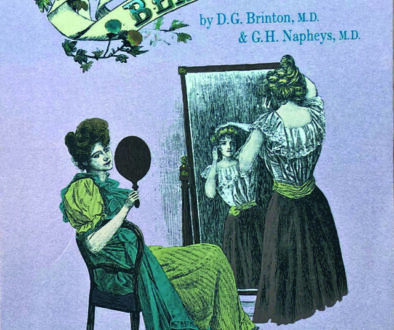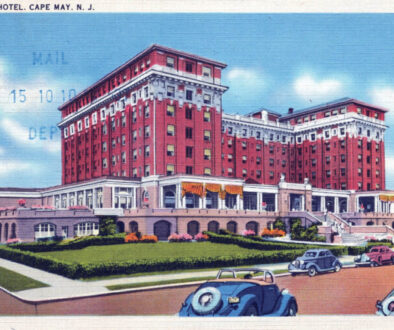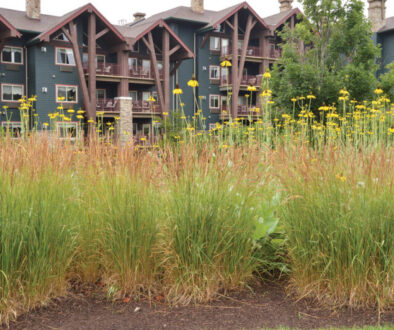Fab Crab
What is as small as the head of a pin or as large as the average bedroom and predates dinosaurs by more than 200 million years? Give up? Crab. Evidence suggests that humans have been enjoying crab since prehistoric times – and we still do. This year earthlings will devour more than 1.4 million tons of it! Here in the U.S. (even though we produce more than $600 million of it per year) we import more crab than any other country. And no wonder, because crab is unlike any other shellfish. Its mild, slightly sweet flavor (no fishy aftertaste) and delicate consistency allow it to blend well with pretty much anything. It is extremely versatile as a garnish, stuffing, an ingredient, or the main event at any meal—even breakfast. You can smother it with sauce or leave it completely unadorned—except for the requisite amount of butter!

Something for Everyone
There are more than 4,500 different species of this ancient creature, but we only consume about half a dozen types:
Blue crab, or Callinectes sapidus, which translates to “beautiful savory swimmer,” is found on the east coast from Nova Scotia to Argentina and is abundant in the Chesapeake Bay. They generally weigh about 1/3 pound and live one to three years. The meat comes from the legs, claws and body and varies widely in price. It is important to understand what you are buying (see chart at the end of this article.)
Snow crab is also found on the east coast. Commonly referred to as spider crab for obvious reasons, it has a slightly firmer texture and is less sweet than blue crab but is much easier to eat.
Dungeness crabs hail from the west coast (from Alaska to Mexico) and are larger than blue crabs—about one and a half to three pounds and are often used in Cioppino.
Jonah crab is similar to Dungeness but found on the east coast and is slightly smaller. The meat, which comes mostly from its claws, is darker and heavier in texture than Dungeness. It is also less expensive and often used by processors that blend the meat with other types of crabs.
Stone crab is found primarily in Florida and prized for its claw meat. They can regenerate a claw in about 18 months, so fishermen remove one claw and toss the crab back into the sea.
King crab, whether Alaskan, Russian, or Japanese, is a giant weighing in at about 25 pounds—although only one quarter of it is edible. It is very expensive and usually served steamed with butter, similar to lobster.
Soft shell crab is any crab that has recently molted (shed its shell in order to form a new one as it grows.) Most often, especially here in the east, it refers to a blue crab and is usually available from May to September. Because it has no shell, it is eaten whole. Blue crabs molt eighteen to twenty-three times during their lifetime with the interval between each molt getting longer as the crabs age and become larger.
She-crab is blue crab meat mixed with crab roe and therefore comes from a female crab, hence the name.
Eat Up – It’s Good For You!
Including crab in your diet can help your heart, your brain, and your blood. It is high in protein: one cup delivers 21 grams, has only 97 calories and less than one gram of fat. It also contains high levels of omega-3 fatty acids, B12 and selenium, and has lower levels of mercury than swordfish, grouper, and tuna. However, go easy if you are limiting your salt intake, as a three-ounce portion has 237 milligrams of sodium.
Crab Cakes
Probably the most common preparation is the customary crab cake. But recipes vary widely. Some are loaded with filler, or deviled (like Mrs. Paul’s used to be). Some are spicy. Some are breaded, some not. They can be sautéed, broiled, baked, or deep fried, and served with melted butter, hollandaise, tarter, remoulade, mustard, or cocktail sauce. “Maryland” style not only refers to cakes that are mostly crab with very little filler but also contain a generous amount of Old Bay Seasoning. I happen to be a purist, preferring my crab cakes to taste like crab, not Old Bay, which overpowers the delicate sweetness of the meat.
Tips for making crab cakes:
- Use lump crab meat – the best quality you can afford.
- Be gentle and don’t overmix. You invested a bit of money in lump crab so don’t break up the lumps!
- Go easy on the filler.
- Season lightly—you don’t want to overpower the crab—after all, it is the main event. I like to add some chopped fresh parsley and a little bit of roasted pepper—it is milder than raw red pepper.
- Bind them together with a little mayonnaise or egg yolk and the tiniest bit of filler you can get away with.
- Bread them lightly if you desire. I like to use a little Panko, but my mother preferred crushed Ritz crackers; any buttery cracker works equally well.
- Be sure to make the cakes uniform in size so they will cook evenly.
- Refrigerate them for about an hour before cooking. It helps the cakes to keep from falling apart in the pan.
- Don’t overcook them. Like any protein, overcooked crab cakes will be chewy. About four minutes per side should be enough.

Cape May Crab
It is interesting how ubiquitous crab is in Cape May, given the number one catch here is scallops. In fact, a recent survey unveiled 33 restaurants with at least one crab item on their menu, with many offering numerous choices. I realize the Chesapeake Bay is right around the corner, but did you know there is more crab on The Lobster House’s menu than there is lobster?
Here in Cape May, you can enjoy crab served with pasta, as a topping for chicken or swordfish, a stuffing for flounder, shrimp, or lobster, served cold as a cocktail or hot as a soup. You can have it prepared as a salad or added to a regular garden salad. It can be the surf with your turf, served scampi style or as a player in a seafood combo. If you love traditional preparations, head over to The Lobster House where you will still find it simply sautéed or served au gratin and imperial styles. Crab cakes, as you might expect, are the most common preparation, although they vary in style. No matter how you prefer yours, you find happiness here.
What I love about Cape May’s cuisine is there is always something unexpected. So, if you are a crab lover, be sure to check out these unique creations:
- Black Duck – blue crab spring rolls
- Exit Zero – seafood pot pie
- Fins – Fins pie – jumbo lump crab flatbread with three cheeses, baby arugula, avocado puree and lemon thyme aioli
- 5 West Pub and Cape May Fish
- Market – crab cake tacos
- 410 Bank Street – crab terrine layered with tomato and avocado or in their gumbo file
- Iccara and Viggiano’s – Portobello mushroom topped with fresh lump crab
- Mayer’s Tavern – crab fritters with cilantro jalapeno salsa
- Oyster Bay – crab cake and lobster crostini with fresh tomato
- Pier House – Cioppino made with Dungeness crab
- Sea Salt – crab croquettes served with chili aioli
- Secondo and Panico’s – The Battered Jersey – fresh tomato layered with crab and baked with blue cheese
- Yozu – soft shell crabs and signature rolls featuring both lump and Alaskan king crab
We even have a restaurant dedicated to crab if you are willing to go “off island” just a mile or two called, surprise, surprise—The Crab House. True to its namesake, the Crab House has 26 items on their menu featuring this delicacy. Their specialty, of course, is steamed blue claws but they also offer snow crab, Dungeness and Alaskan King crab. You can also order a combination of all the above or blue claws in garlic sauce. But it doesn’t stop there! They obviously are obsessed with crab and have a vivid imagination—especially when it comes to appetizers, which they lovingly refer to as crabatizers! For example: fried crab balls, crab attack fries, crab quesadillas, potato skins with crab, pretzels with crab dip, crab deviled eggs, baked crab and spinach dip—there is even a poke bowl.
Crab is the only shellfish I have ever seen on a breakfast menu. So just in case you can’t get enough at lunch and dinner, Bella Vida, Elaine’s, George’s Place, Harry’s, The Grange, The Mad Batter and Fins (in winter only) also serve up delicious crab Benedict.
If you would like to cook some yourself, you can buy it at The Lobster House Fish Market, H&H Seafood Market, Cape May Fish Market and Central Park Farm. Even our supermarkets carry frozen king crab and various grades of canned blue crab. But you won’t find it next to the canned tuna. It is kept refrigerated near the fresh fish department.
Last but not least, plan a visit in late July so you can attend the annual Craft Beer and Crab Festival sponsored by MAC at the Emlen Physick Estate. You will enjoy great food and drink plus crafters, family entertainment, and back-to-back music. Admission is free and well-behaved pets are welcome. ■
How to Eat a Blue Crab like a Pro – Step by Step
- Twist off the legs and claws as you would if you were eating a lobster
- Pry up the apron on the underside of the crab as if it were a handle and throw it away
- Pull off the top shell and discard
- Peel off the gills and discard
- Break it in half
- Continue to break it apart and pull out the meat
- Enjoy and keep lots of wet paper towels handy!
Grades of Blue Crab
(in Decreasing Order of Price)
Colossal or jumbo lump – large chunks of white meat connected to the swimmer fins; best eaten by itself dipped in butter
Lump – broken jumbo chunks mixed with large chunk of body meat – great for crab cakes and dishes that require large impressive pieces
Backfin –smaller broken chunks of lump mixed with flakes of body meat – good for salads and pasta dishes
Special – flakes of body meat – used in dips, mayo-based salads and soups
Claw – pinkish brown – stronger flavor and least expensive – good for heartier dishes like spicy chowders or tacos




